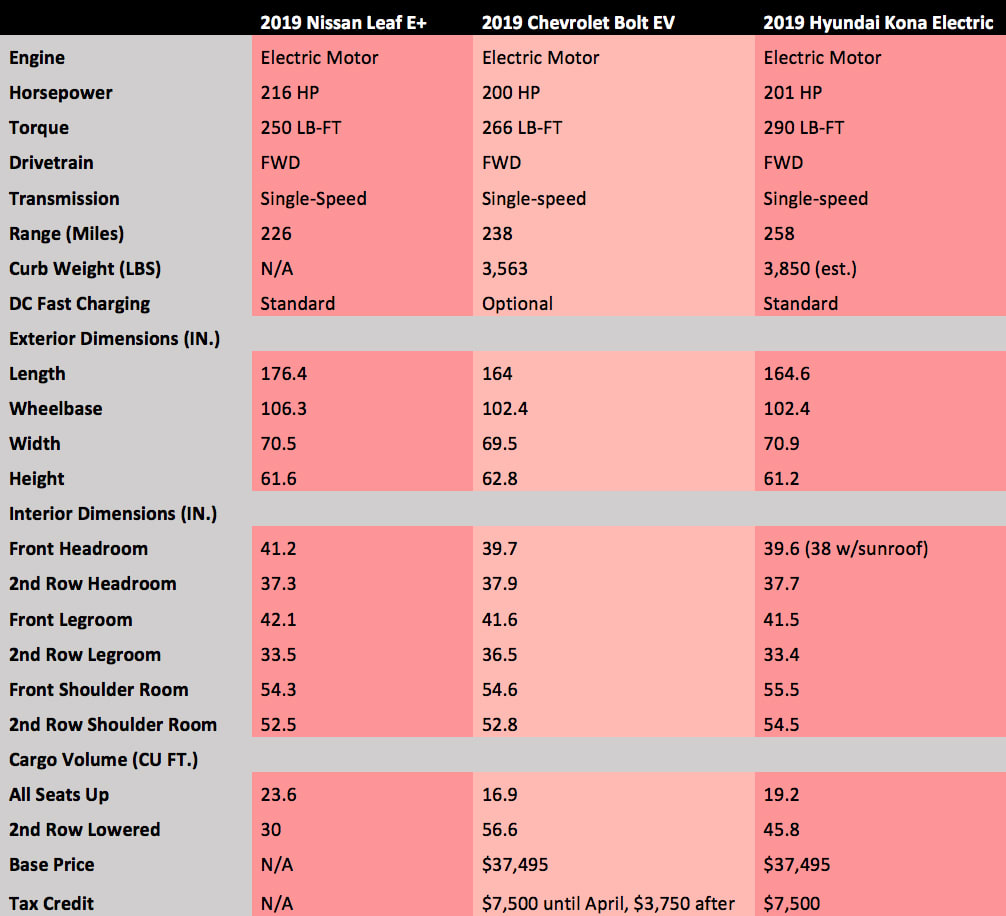Audi Repair Shop Doylestown
Call 267 279 9477 to schedule a appointment
Buying an
once meant choosing either a reasonably priced model with paltry range and weak power, or a massively expensive one with a decent range. But today we have not one, but three options with reasonable prices and healthy ranges of over 200 miles. The latest of which is the 2019
e+, which brings a bigger battery and a more powerful motor over its entry-level counterpart.
The question is, how does it stack up with the defending entries in this segment, the
and
Electric? To get an idea, we’ve gathered up the specifications of each electric hatchback for comparison. We’ll take a look at power, torque, electric range, charging options, interior space and the all-important pricing and incentives. You can see the raw numbers in the chart below, and additional insights in the text beyond that. If you’d like to compare these cars with other vehicles, be sure to check out
.
Range and power
No matter how much
improve their overall range, range anxiety is going to be an issue for a while, meaning every mile counts. The
Electric is the hands-down winner, managing 258 miles from its 64-kWh battery. Next is the
at 238 miles from the group’s smallest 60-kWh battery, followed by the Leaf e+ with 226 miles from a 62-kWh battery. For those who want to get really deep into energy usage, the
and the Kona Electric have the same
rating for energy consumption of 28 kWh per 100 miles, meaning they’re equally efficient. This is particularly impressive for the Kona, since it weighs nearly 300 pounds more than the Bolt.
Something else to consider with these electric cars are charging options. All three have 120-volt level 1 and 240-volt level 2 charging capability standard, but only the Leaf e+ and Kona Electric give you DC fast charging capability for free. To get it on the Bolt EV, you’ll spend an extra $750.
, you’ll want DC fast charging if you plan on doing any long trips.
As for the motors propelling these EVs, there’s very little difference. The Bolt and Kona are neck-and-neck with 200 and 201 horsepower respectively. The Leaf has a few more horses at 216. In the torque department, the Leaf is last with 250 pound-feet, and the Bolt is just ahead at 266. The Kona is a serious twister with 290 pound-feet. Regardless, these are all fairly impressive numbers that wouldn’t be out of place in a hot hatch. Each of these cars sends this power and torque to the front wheels through a single-speed transmission.
Interior and exterior dimensions
On the outside, the biggest car here is the Nissan Leaf e+. It’s a foot longer overall than the
and
, with a wheelbase about 4 inches longer. All three are nearly the same height. Conventional wisdom would say the Leaf is the most spacious for interior occupants, and while that applies to front headroom and legroom, rear seat room is about tied with the much smaller Kona. The Chevy Bolt EV is the most comfortable for rear passengers, offering about 3 extra inches of legroom and matching the others in headroom.
The Leaf does claw back an advantage when it comes to cargo space behind the rear seats at 23.6 cubic feet, whereas the Bolt has just 16.9. But fold the seats and the Bolt becomes the cargo-carrying king with 56.6 cubic feet.
reports the Leaf at just 30. (We’re not quite sure if there’s a difference in how the cargo area is measured that accounts for such a large difference, as the cars should be far more similar in interior space.) The Kona falls between the two.
Pricing
Until April, the Hyundai Kona Electric and Chevy Bolt EV cost the exact same amount of money
, barring any special offers from
. Each has a base price of $37,495, and each qualifies for a $7,500 tax credit. But because Chevy has sold 200,000
, that
tax credit will drop to $3,750 in April
. That will last for six months, after which it will drop to $1,875 for six more months before disappearing altogether.
Pricing for the Leaf e+ has not yet been announced. Reports suggest a $6,600 price premium over the base model, meaning it the estimated price would be $37,475, or $20 less than the Hyundai and Chevy. The Leaf will also be eligible for the full $7,500 tax credit as the company hasn’t sold 200,000 electric cars in the U.S. yet.
Driving impressions
Related Video:
from Autoblog http://bit.ly/2Fgbb4L

